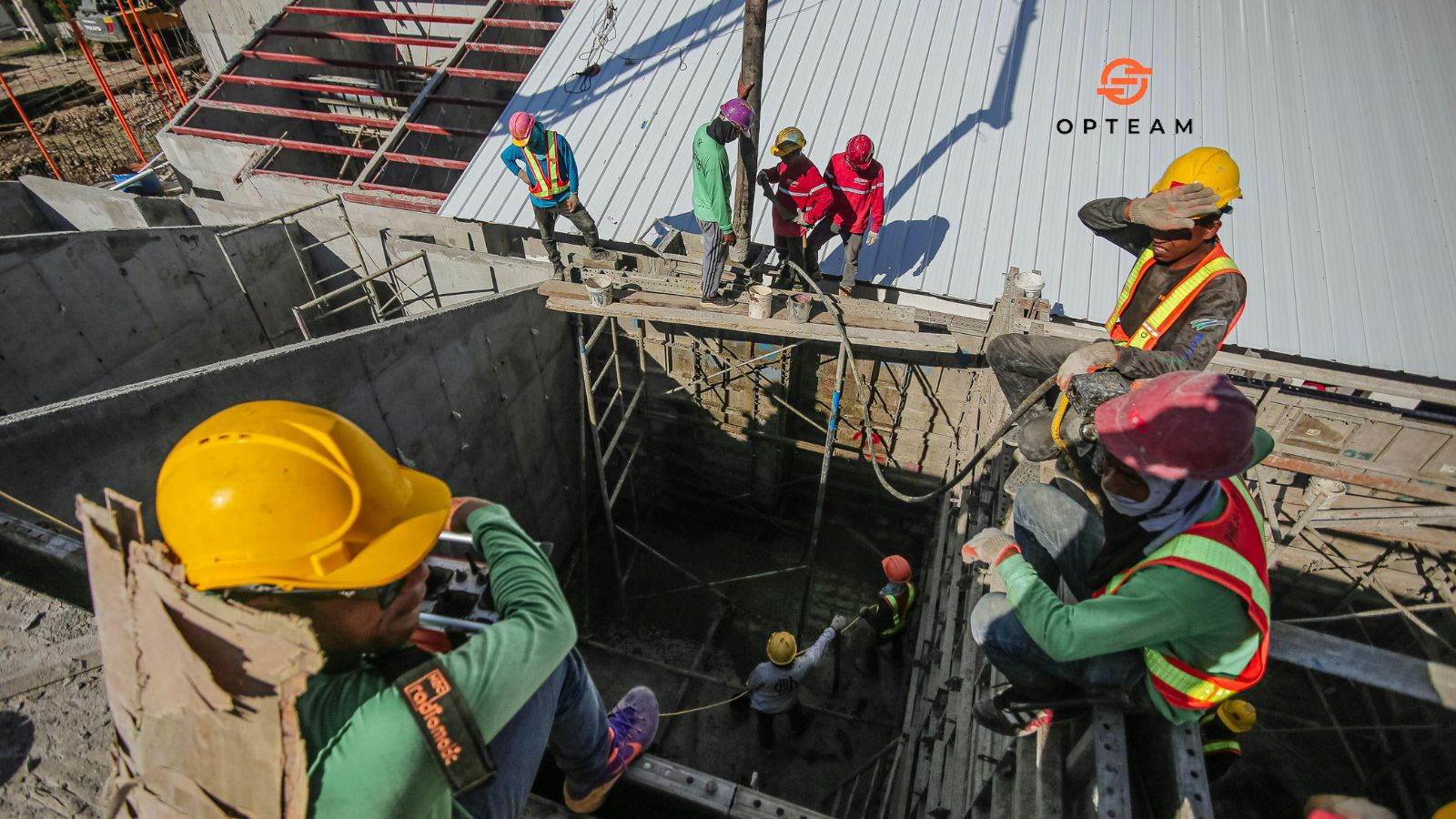In construction, timelines are tight, budgets are tighter, and project complexity is at an all-time high.
Among the chaos of change orders, material delays, subcontractor coordination, and cost overruns—one thing becomes crystal clear: spreadsheets and static Gantt charts aren’t enough anymore.
Enter construction scheduling analytics software—a game-changer for contractors, planners, and project managers who want to stay ahead of the curve, not scramble to catch up.
If you’re still using Primavera P6 or Excel to track your schedules, you’re not alone—but you’re also not optimized.
✅ Want to see how Opteam helps construction teams automate scheduling analytics and stay ahead of delays? Try it free for 14 days
What Is Construction Scheduling Analytics Software?
Construction scheduling analytics software is a category of digital tools that allow construction professionals to not only plan and track schedules—but analyze them.
That means real-time insights into schedule performance, forecasting delays before they happen, identifying critical bottlenecks, and comparing planned vs. actual progress using smart, visual dashboards.
In short: It’s the difference between “tracking a schedule” and “controlling your project’s future.”
Key Features You Should Expect:
- Gantt chart synchronization with real-time data
- Critical path analysis and forecasting
- Delay risk prediction using historical trends
- Visual dashboards for daily progress updates
- Collaboration tools to keep planners, engineers, and site teams aligned
Why Traditional Tools Fall Short
Primavera P6 and Excel were great—20 years ago. But today’s projects demand a level of visibility, automation, and speed those tools can’t keep up with.
Let’s break down what’s missing:
| Feature | Primavera / Excel | Construction Scheduling Analytics Software |
|---|---|---|
| Real-time schedule updates | ❌ Manual | ✅ Automated |
| Delay risk forecasting | ❌ None | ✅ Predictive |
| Collaboration with site teams | ❌ Disconnected | ✅ Integrated |
| Visual dashboards | ❌ Static | ✅ Interactive |
| Time-saving automation | ❌ Zero | ✅ Built-in |
If your project schedule is only as accurate as your last update—you’re flying blind.
🔍 Stop relying on static files and guesswork. Get instant project visibility with Opteam
The ROI of Smarter Scheduling
Think analytics is just a “nice-to-have”? Let’s talk numbers.
McKinsey reports that large construction projects typically take 20% longer to finish than scheduled and are up to 80% over budget. Most of these issues stem from poor planning and lack of real-time visibility.
By using construction scheduling analytics software, companies have reported:
- Up to 30% faster decision-making
- 50% reduction in delay-related penalties
- Improved subcontractor coordination
- A significant drop in claims and disputes
When every day on site costs money, better scheduling = bigger profits.
Use Case: How Opteam Helps Real Projects Stay on Track
Let’s say you’re managing a high-rise residential tower with 18 months to deliver.
Midway through the project, material delivery delays push back your slab casting schedule. Normally, this would trigger a chain reaction—subsequent trades like MEP and finishing crews fall behind, and the project starts bleeding days and money.
With Opteam’s construction scheduling analytics software, you:
- Get alerted about the early warning signals (slipping activities, delayed dependencies).
- Analyze the impact on the critical path in seconds—not days.
- Adjust the baseline and share updated visuals with all teams in real-time.
- Monitor recovery performance week by week.
That’s not managing chaos. That’s leading with confidence.
📊 Want to simulate delay impact with one click? Sign up for Opteam now
How Opteam Stands Out
Not all scheduling analytics tools are created equal. Here’s what makes Opteam the preferred choice for modern construction teams:
1. Instant Primavera & Excel Integration
Upload your XER files or Excel schedules and get instant dashboards. No need to rebuild schedules from scratch.
2. Critical Path Segments™ (CPS) Methodology
Opteam introduces a new, smarter way to monitor progress by segmenting your critical path and automatically showing where you’re falling behind.
3. Visual Delay Alerts
See exactly which activities are slipping and how they affect the overall timeline.
4. Daily Reporting from Site to Schedule
Integrate field updates with planning data. No more chasing WhatsApp updates from the site.
5. Works for Teams of Any Size
Whether you’re a local contractor or managing a mega project, Opteam scales with you.
⚡ Ready to replace delay chaos with clarity? Start your free trial
Who Needs Construction Scheduling Analytics Software?
This isn’t just a tool for planning engineers—it’s a strategic weapon for:
- Project Managers: Know where delays are coming before they hit.
- Contractors: Prove delays are not your fault. Back claims with data.
- Consultants: Benchmark multiple projects and stay ahead of KPIs.
- Developers/Owners: Get transparency and accountability from your teams.
- Planners: Say goodbye to exporting Excel reports every week.
If you’re in construction and responsible for delivering on time—this software is for you.
FAQs: Everything You Should Know
Is construction scheduling analytics software hard to use?
Not with Opteam. If you know how to upload a Primavera file or use Excel, you’ll feel right at home. Our platform is built with simplicity in mind.
Does it replace my current scheduling tool?
No—Opteam enhances it. You still use Primavera or MS Project to build your schedule. Opteam gives you the analytics and visibility those tools lack.
What kind of support does Opteam offer?
Live support, onboarding assistance, and dedicated chat. You won’t be left guessing.
Is it worth the investment?
When one missed deadline can cost thousands—or millions—the ROI is crystal clear.
🎯 Let your schedule work for you, not against you. Claim your free Opteam trial
Final Thoughts: Delay Is a Data Problem—Solve It with Analytics
You wouldn’t drive a car with a blindfold on. So why run a construction project without knowing exactly where your schedule stands?
Construction scheduling analytics software turns your timelines from assumptions into action plans.
It helps you:
- Detect slippage early
- Assign accountability
- React with data, not gut feeling
- Meet deadlines consistently
- Win client trust (and more projects)
And with Opteam, it’s never been easier to get started.
✅ Upload your XER or Excel file.
✅ Get your first project dashboard in 2 minutes.
✅ No credit card needed.


